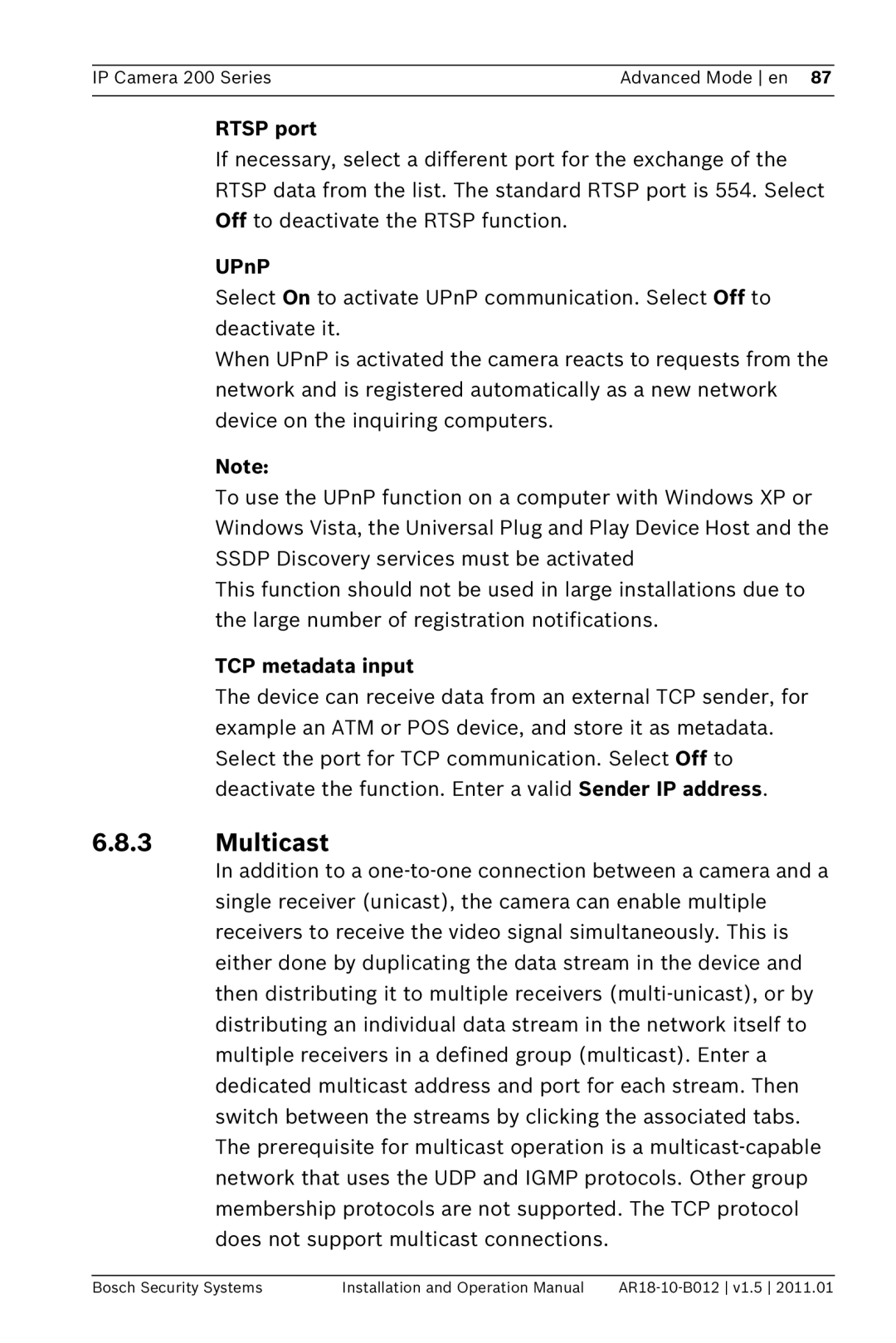
IP Camera 200 Series | Advanced Mode en 87 |
|
|
RTSP port
If necessary, select a different port for the exchange of the RTSP data from the list. The standard RTSP port is 554. Select Off to deactivate the RTSP function.
UPnP
Select On to activate UPnP communication. Select Off to deactivate it.
When UPnP is activated the camera reacts to requests from the network and is registered automatically as a new network device on the inquiring computers.
Note:
To use the UPnP function on a computer with Windows XP or Windows Vista, the Universal Plug and Play Device Host and the SSDP Discovery services must be activated
This function should not be used in large installations due to the large number of registration notifications.
TCP metadata input
The device can receive data from an external TCP sender, for example an ATM or POS device, and store it as metadata. Select the port for TCP communication. Select Off to deactivate the function. Enter a valid Sender IP address.
6.8.3Multicast
In addition to a
Bosch Security Systems | Installation and Operation Manual |
